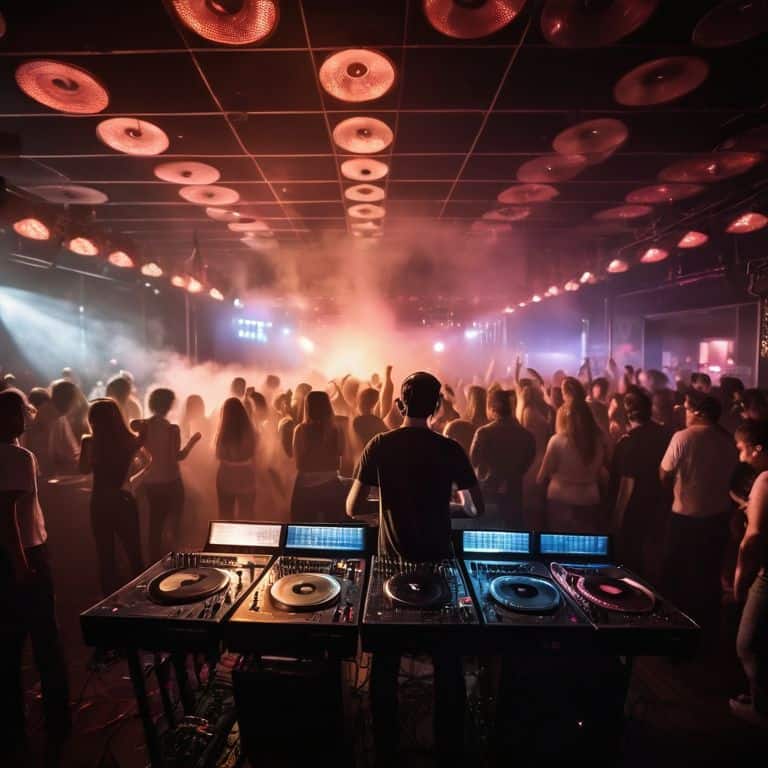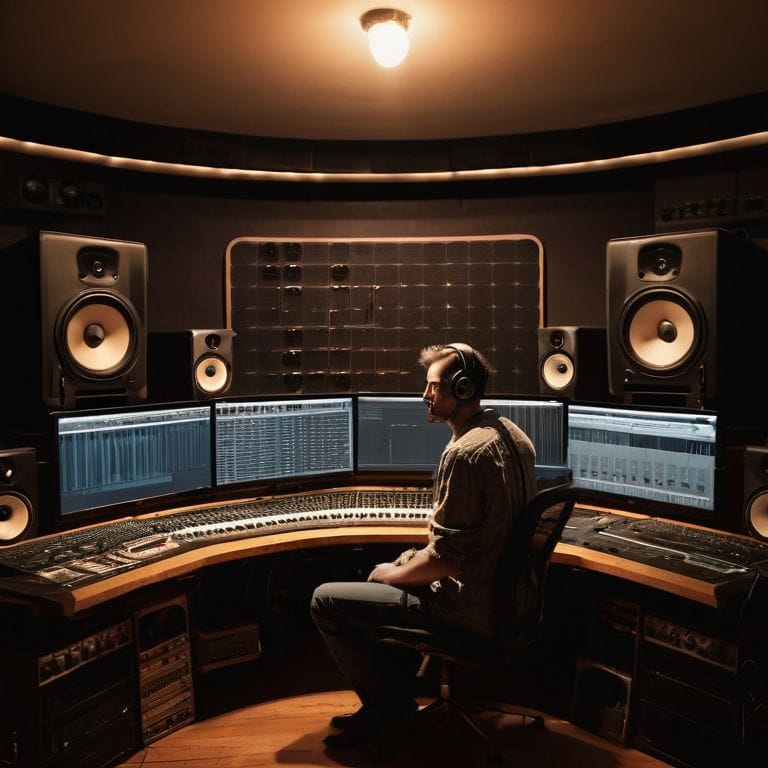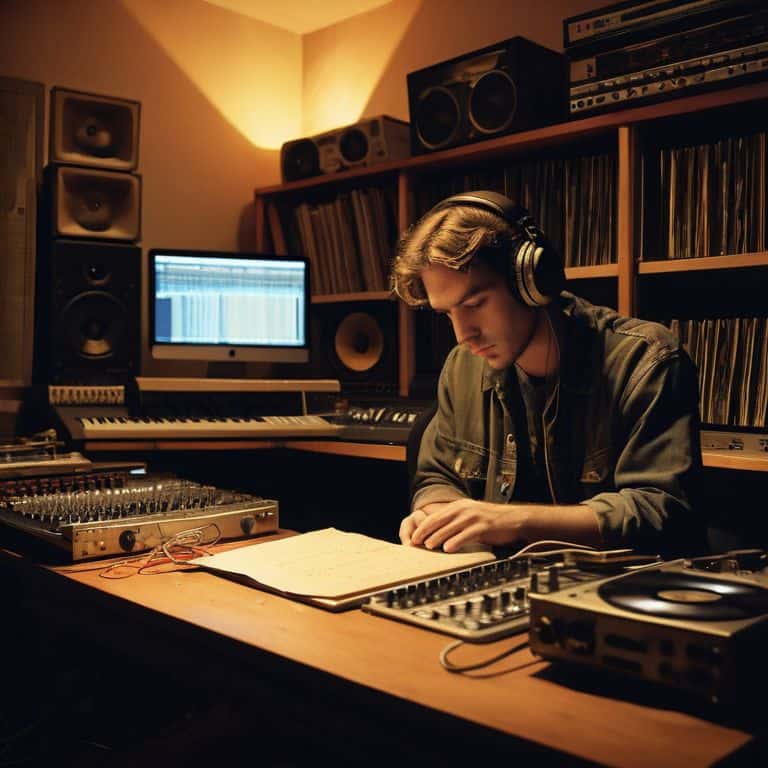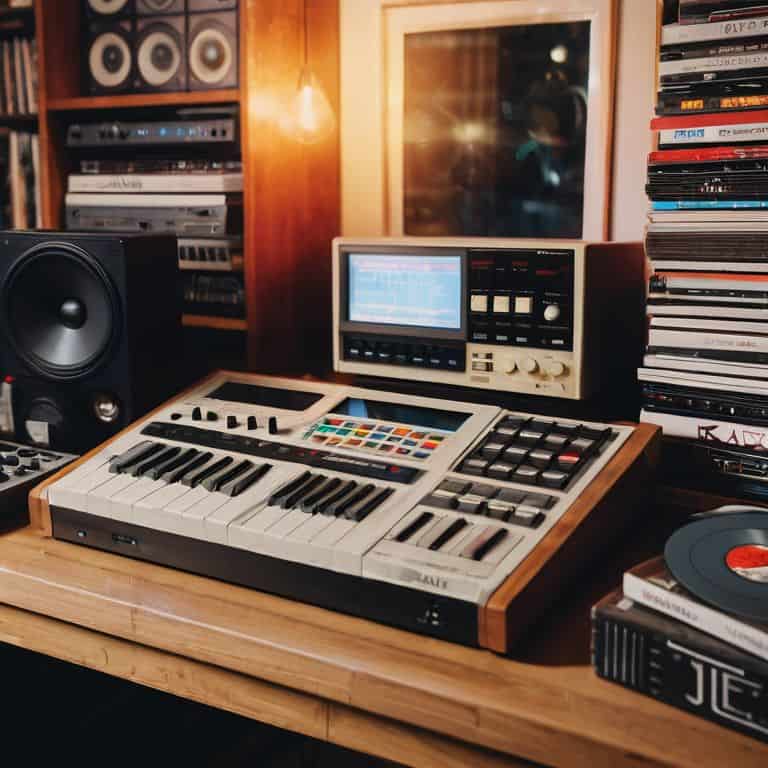I still remember the first time I heard Pump Up the Jam by Technotronic – it was like a sonic revolution in my ears. The way that sampling wove together disparate threads of music to create something entirely new was like magic. But as I delved deeper into the world of music production, I began to realize that the story of how sampling changed music is far more complex than just a simple narrative of innovation. It’s a story of cultural exchange, of artistic appropriation, and of the blurred lines between creativity and copyright.
As someone who’s spent years exploring the intersection of music and culture, I want to take you on a journey to unpack the real story of how sampling changed music. I’ll share my own experiences as a music journalist, digging into the trenches of the 90s indie scene, and later as an academic, analyzing the sonic landscapes that sampling has created. My goal is to provide you with a no-nonsense, hype-free exploration of the ways in which sampling has reshaped our understanding of music, art, and culture. I’ll cut through the jargon and the myths, and get to the heart of what makes sampling such a powerful force in the music world.
Table of Contents
Rewinding the Loop

As I delve into the evolution of music sampling, I’m reminded of the countless nights spent in dingy clubs, surrounded by the pulsating rhythms of electronic music. The air was alive with the thrill of discovery, as DJs and producers pushed the boundaries of what was possible with sound. _Sampling in electronic music_ was more than just a technique – it was a statement, a rejection of the status quo and an embracing of the unknown. The influence of remix culture was palpable, as artists began to see music as a fluid, ever-changing entity that could be manipulated and recontextualized at will.
The rise of digital audio workstations has democratized music production, making it possible for anyone to create and sample music with ease. However, this increased accessibility has also raised important questions about music copyright laws and the ownership of sound. As a lecturer, I’ve seen students struggle to navigate the complex web of regulations surrounding sampling, and it’s clear that the industry is still grappling with the implications of this technology.
In the context of hip hop production, sampling techniques have become an integral part of the genre’s DNA. From the dusty loops of DJ Premier to the soulful interpolations of Kanye West, sampling has been used to create a sense of sonic continuity, bridging the gap between past and present. As I explore the history of sampling, I’m struck by the way it reflects our deepest anxieties and desires – a desire for connection, for community, and for creative expression.
Evolution of Sampling in Electronic Beats
As I delve into the evolution of sampling in electronic beats, I’m reminded of the sonic experimentation that defined the genre’s early days. Producers like The Avalanches and DJ Shadow were pushing the boundaries of what was possible with sampled sounds, creating rich textures and layers that added depth to their tracks.
The use of found sounds became a staple of electronic music, with artists incorporating everything from vintage vinyl crackle to eerie ambiance into their productions. This approach not only paid homage to the past but also infused the music with a sense of history and nostalgia, making each track a unique time capsule of sound.
Remix Cultures Influence on Music Production
As I delve into the world of remix culture, I’m struck by how sampling has democratized music, allowing artists to tap into a vast sonic library and create something entirely new. This shift has led to a proliferation of innovative productions, where the lines between original and remixed are beautifully blurred.
In this era of limitless creative possibilities, music production has become a form of cultural archaeology, with artists excavating and recontextualizing sounds from the past to craft unique narratives.
How Sampling Changed Music

As I delve into the evolution of music sampling, I’m reminded of the pivotal role it played in shaping the sound of electronic music. The advent of digital audio workstations for sampling revolutionized the process, allowing artists to effortlessly weave together disparate sounds and create something entirely new. This, in turn, had a profound impact on the influence of remix culture, as producers began to push the boundaries of what was possible in music production.
The sampling techniques in hip hop production are a testament to the genre’s innovative spirit. By recontextualizing snippets of existing songs, hip hop artists were able to craft unique narratives that spoke to the experiences of their community. This approach not only reflected the music copyright laws of the time but also subverted them, raising important questions about ownership and authorship in the digital age.
In the end, the rise of sampling in electronic music led to a seismic shift in the way we think about music production. With the advent of digital tools, artists were no longer limited by their physical instruments, and the digital audio workstations for sampling became the new playground for sonic experimentation. As a result, the music landscape was forever altered, paving the way for a new generation of producers to experiment with sampling in electronic music.
Digital Workstations and Music Copyright Laws
As music production transitioned into the digital realm, digital workstations became the norm, allowing artists to manipulate and combine samples with unprecedented ease. This shift enabled the creation of complex, layered soundscapes that were previously impossible to achieve. With the ability to edit and process samples with precision, musicians could now push the boundaries of what was possible in music production.
The rise of digital sampling also led to a reexamination of music copyright laws, as the ease of sampling and remixing raised questions about ownership and fair use. This, in turn, sparked a new wave of discussions around the role of sampling in music creation, with some arguing that it stifled creativity and others seeing it as a means of paying homage to the past.
Sampling Techniques in Hip Hops Golden Age
As I delve into the world of hip hop’s golden age, I’m struck by the innovative sampling techniques that defined the era. Artists like the Beastie Boys and DJ Shadow were masters at weaving together disparate sounds to create something entirely new. This era was all about experimentation, and the results were nothing short of groundbreaking.
The way producers like Marley Marl and Prince Paul used found sounds to add texture and depth to their tracks is a testament to their creativity. By combining these unconventional elements with traditional hip hop beats, they created a unique sound that captivated audiences and paved the way for future generations of producers.
Sampling Savvy: 5 Key Takeaways on How Sampling Revolutionized Music
- Embracing the art of sampling as a form of musical storytelling, where fragments of the past are recontextualized to convey contemporary themes and emotions
- Understanding the evolution of sampling technology, from early tape loops to modern digital workstations, and how each innovation expanded the creative palette for artists
- Recognizing the legal and ethical complexities surrounding music sampling, including copyright laws and the importance of clearing samples to avoid disputes
- Appreciating the role of sampling in bridging genres and fostering cross-cultural exchange, as seen in the fusion of hip hop with rock, jazz, and electronic music
- Experimenting with sampling as a tool for sonic experimentation and pushing the boundaries of what is possible in music production, from glitch art to ambient textures
Unpacking the Rhythm of Revolution: 3 Key Takeaways
Sampling is more than a technique – it’s a cultural time capsule that reveals our fascination with the past, our anxiety about ownership, and our desire to create something entirely new from the fragments of what’s come before.
The evolution of sampling from its humble beginnings in electronic beats to its current status as a mainstream staple in hip hop and beyond is a testament to music’s unique ability to absorb, reflect, and influence societal shifts, from technological advancements to legal battles over copyright.
Ultimately, the story of how sampling changed music is not just about the music itself, but about the people – the artists, the fans, the critics – and the complex, often contradictory emotions and ideas that music embodies: nostalgia and innovation, rebellion and conformity, creativity and commerce.
The Sonic Revolution
Sampling didn’t just change music – it cracked open the vault of our collective memory, allowing us to recontextualize, reimagine, and rebirth the sounds that defined our past, in the process revealing the haunting beauty of our shared cultural psyche.
Julian Thorne
The Rhythm of Revolution

As we’ve delved into the world of sampling, it’s clear that this technique has been a game-changer in music production. From its humble beginnings in electronic beats to its widespread use in hip hop’s golden age, sampling has rewritten the rules of creativity and originality. We’ve seen how remix culture has influenced music production, with artists pushing the boundaries of what’s possible with digital workstations and navigating the complex landscape of music copyright laws. Through it all, sampling has remained a powerful tool for self-expression and innovation.
As we look to the future, it’s exciting to think about the new sounds and styles that will emerge from the Sampling Revolution. With technology continuing to evolve and artists constantly seeking new ways to express themselves, the possibilities are endless. So let’s embrace this beautiful chaos and see where the rhythm of revolution takes us – for in the world of music, it’s often the unexpected that leads to the most profound and lasting impact.
Frequently Asked Questions
What role did sampling play in the development of new genres, such as trip hop or chillout music?
Sampling was the catalyst for trip hop and chillout’s atmospheric soundscapes, allowing artists like Massive Attack and DJ Shadow to weave together fragments of psychedelia, jazz, and soul, creating a hypnotic, downtempo landscape that reflected the era’s angst and disillusionment.
How did the rise of digital audio workstations and software plugins impact the creative process for producers working with samples?
The digital revolution – it’s like the sampler’s best friend and worst enemy all at once. With digital audio workstations and software plugins, producers can now chop, flip, and tweak samples with unprecedented ease, blurring the lines between creation and curation in the process.
In what ways have changes in music copyright laws and sampling clearance procedures affected the use of samples in contemporary music production?
The shifting landscape of music copyright laws has drastically altered the sampling game, with clearance procedures becoming a costly, bureaucratic hurdle. Now, artists must navigate a complex web of permissions and royalties, often stifling creativity in the process – a far cry from the wild, sample-heavy days of hip hop’s golden era.
